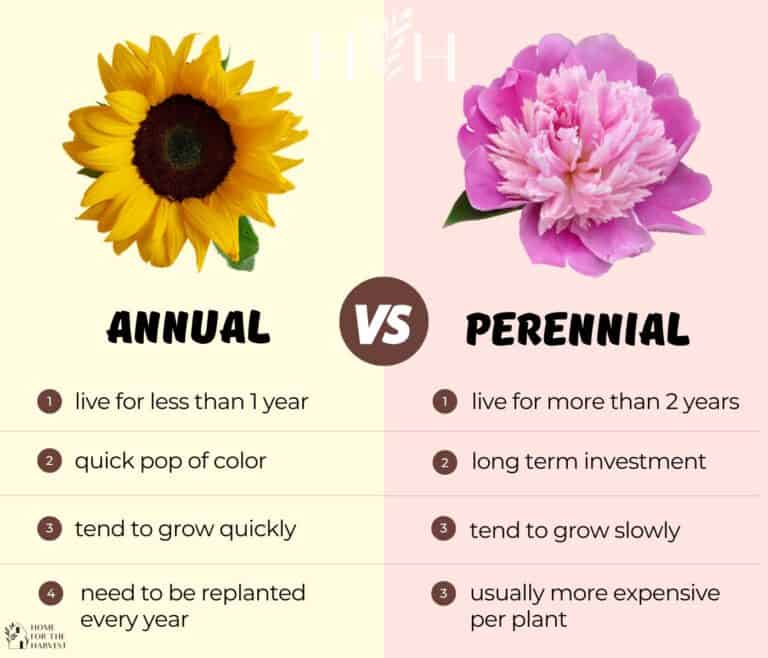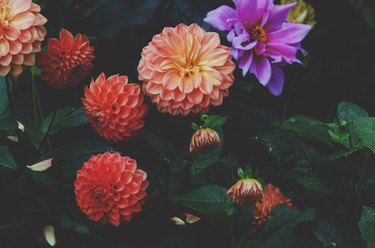What Are Annual Flowers, Anyway?
Annual flowers are a type of flowering plant that completes its life cycle within a year. They germinate, grow, produce flowers and seeds, and die all within a single growing season. This is in contrast to perennials, which come back year after year, and biennials, which take two years to complete their life cycle. Annuals are often preferred by gardeners due to their vibrant colors, ease of care, and ability to add a pop of color to any garden or landscape. They are also a great option for those who like to change up their garden design frequently, as they can be easily replaced with new varieties each year. While many people wonder “do annual flowers come back yearly”, the answer is typically no, but there are some exceptions and techniques that can encourage repeat performances from these beautiful blooms. Annuals are also a great way to add some seasonal interest to a garden, as they can be planted in the spring or fall to add some color and vibrancy to the landscape.
The Myth-Busting Truth About Annual Flowers
One of the most common misconceptions about annual flowers is that they come back every year. However, this is not entirely accurate. Annuals complete their life cycle within a year, which means they germinate, grow, produce flowers and seeds, and die all within a single growing season. They do not regrow from the same roots, unlike perennials, which can come back year after year. While it’s true that some annuals may reseed themselves, this is not the same as regrowing from the same roots. So, to answer the question “do annual flowers come back yearly”, the answer is typically no, but there are some exceptions and techniques that can encourage repeat performances from these beautiful blooms. Understanding the life cycle of annuals is key to getting the most out of these vibrant and easy-to-care-for flowers.
How to Encourage Repeat Performances from Your Annuals
While annual flowers typically do not come back year after year, there are some techniques that can encourage re-seeding or re-growth from these beautiful blooms. One way to promote re-seeding is to allow annuals to go to seed, which means letting them produce seeds naturally. This can be done by not deadheading the flowers, allowing them to produce seeds that can scatter and germinate in the same area. Deadheading, on the other hand, can encourage annuals to produce more blooms, but it can also prevent them from producing seeds. Providing optimal growing conditions, such as well-draining soil, adequate sunlight, and sufficient watering, can also increase the chances of annuals coming back. Additionally, some annuals can be encouraged to regrow from the same roots by dividing and replanting them in the fall or early spring. By using these techniques, gardeners can increase the chances of getting a repeat performance from their annual flowers, and enjoying their vibrant colors and ease of care for another season. So, while the answer to “do annual flowers come back yearly” is typically no, with a little extra effort, gardeners can encourage these beautiful blooms to come back year after year.
The Role of Climate and Soil in Annual Flower Regrowth
While annual flowers may not come back year after year, the climate and soil conditions can play a significant role in their regrowth. In regions with mild winters, annuals may be able to survive and regrow from the same roots, whereas in areas with harsh winters, they may not be able to survive. Additionally, soil quality can also affect the likelihood of annual flowers coming back. Well-draining soil with the right pH level can provide a favorable environment for annuals to regrow, whereas poor soil conditions can prevent them from thriving. Weather conditions, such as adequate rainfall and sunlight, can also impact the regrowth of annuals. By understanding the role of climate and soil in annual flower regrowth, gardeners can create a favorable environment that encourages these beautiful blooms to come back year after year. For example, in regions with hot summers, providing shade and adequate watering can help annuals survive and regrow. Similarly, in areas with poor soil, adding organic matter and fertilizers can improve the soil quality and increase the chances of annuals coming back. By taking these factors into consideration, gardeners can increase the chances of getting a repeat performance from their annual flowers, and enjoying their vibrant colors and ease of care for another season. So, while the answer to “do annual flowers come back yearly” is typically no, with the right climate and soil conditions, gardeners can encourage these beautiful blooms to come back year after year.
Annual Flowers That Might Just Surprise You
While annual flowers typically do not come back year after year, there are some varieties that can surprise you with their ability to self-seed or regrow from the same roots. Marigolds, for example, are known to self-seed and can come back year after year if the conditions are right. Zinnias are another annual flower that can regrow from the same roots if they are not deadheaded, allowing them to produce seeds that can germinate in the same area. Cosmos are also known to self-seed and can come back year after year, providing a beautiful display of colorful blooms. These annual flowers are often referred to as “tender perennials” because they can behave like perennials in certain conditions. By choosing these varieties, gardeners can increase the chances of getting a repeat performance from their annual flowers, and enjoying their vibrant colors and ease of care for another season. So, while the answer to “do annual flowers come back yearly” is typically no, there are some exceptions to the rule that can provide a pleasant surprise for gardeners. By understanding which annual flowers are more likely to come back, gardeners can make informed decisions about which varieties to plant and how to care for them.
Perennials vs. Annuals: Which Is Right for You?
When it comes to choosing between perennials and annuals, gardeners often find themselves wondering which type of flower is best suited to their gardening needs. While both types of flowers have their own unique benefits and drawbacks, understanding the key differences between them can help gardeners make an informed decision. Perennials, for example, are flowers that come back year after year, often requiring minimal maintenance and care. They are ideal for gardeners who want a low-maintenance garden that still provides a beautiful display of blooms. Annuals, on the other hand, complete their life cycle within a year and typically do not regrow from the same roots. They are ideal for gardeners who want to add a pop of color to their garden or try out new varieties without making a long-term commitment. While perennials may require more initial effort to establish, they can provide years of enjoyment with minimal upkeep. Annuals, on the other hand, may need to be replanted every year, but they offer the opportunity to try out new varieties and colors. Ultimately, the decision between perennials and annuals comes down to personal preference and gardening goals. By understanding the pros and cons of each, gardeners can choose the type of flower that best fits their lifestyle and gardening needs. So, do annual flowers come back yearly? While the answer is typically no, annuals can still provide a beautiful display of blooms with the right care and attention. By choosing the right type of flower for their garden, gardeners can enjoy a vibrant and thriving garden that brings joy and beauty to their outdoor space.
Common Mistakes to Avoid When Growing Annuals
While annual flowers can be a wonderful addition to any garden, they do require some care and attention to thrive. Unfortunately, many gardeners make common mistakes that can prevent their annuals from reaching their full potential. One of the most common mistakes is inadequate sunlight. Most annuals require at least six hours of direct sunlight per day to produce plenty of blooms. If they don’t receive enough sunlight, they may become leggy and produce fewer flowers. Another common mistake is poor soil quality. Annuals need well-draining soil that is rich in nutrients to grow well. If the soil is too dense or lacks essential nutrients, annuals may struggle to grow. Insufficient watering is also a common mistake. Annuals need consistent moisture, especially when they’re producing buds and blooms. If they don’t receive enough water, they may drop their buds or fail to produce flowers. By avoiding these common mistakes, gardeners can help their annuals thrive and enjoy a beautiful display of blooms all season long. Remember, do annual flowers come back yearly? While the answer is typically no, with the right care and attention, annuals can still provide a vibrant and thriving garden that brings joy and beauty to any outdoor space.
Conclusion: The Joys of Growing Annual Flowers
In conclusion, annual flowers can bring a burst of color and vibrancy to any garden, and with the right care and attention, they can thrive and provide a beautiful display of blooms all season long. While they may not come back yearly, annuals offer a unique opportunity to try out new varieties and techniques, and to experiment with different colors and textures. By understanding the life cycle of annuals, and by avoiding common mistakes such as inadequate sunlight, poor soil, and insufficient watering, gardeners can help their annuals reach their full potential. Whether you’re a seasoned gardener or just starting out, annual flowers are a great way to add some excitement and beauty to your outdoor space. So, do annual flowers come back yearly? While the answer is typically no, the benefits of growing annuals far outweigh the drawbacks. With their vibrant colors, ease of care, and versatility, annual flowers are a great choice for any gardener. So why not give them a try and see the joy they can bring to your garden?









